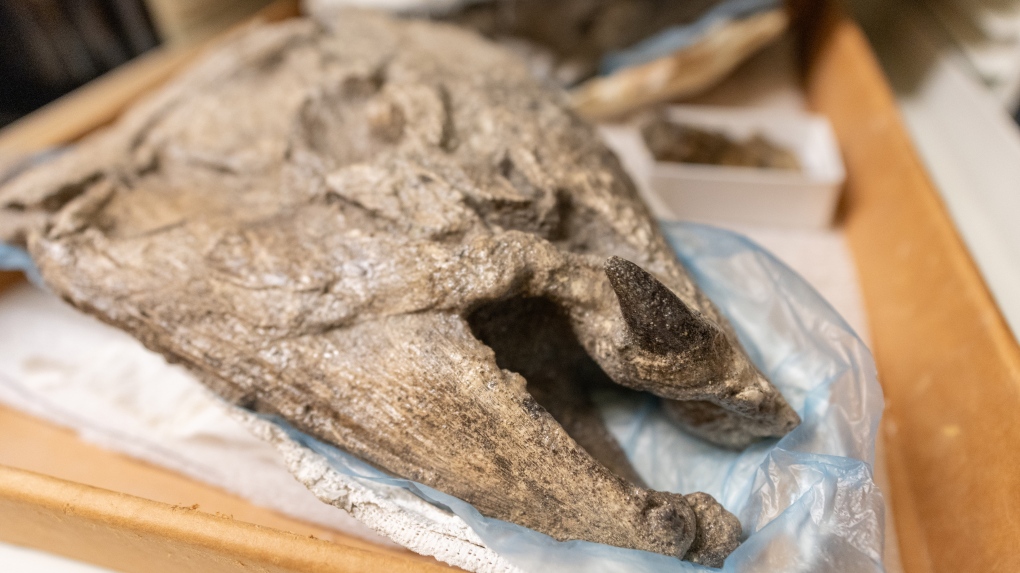Science
UAE's Hope Probe enters Mars orbit in first Arab mission – Toronto Sun

Article content continued
To enter Mars’ orbit, the probe needed to burn around half its 800 kg of onboard fuel to slow down enough not to overshoot.
This year marks 50 years since independence from Britain and the founding of the UAE. Mars probes launched by China and NASA just after the UAE’s lift-off in July are also set to reach the planet this month.
The Emirates Mars Mission, which has cost around $200 million, launched the Hope Probe from a Japanese space center. It aims to provide a complete picture of the Martian atmosphere for the first time, studying daily and seasonal changes.
The UAE first announced plans for the mission in 2014 and launched a National Space Programme in 2017 to develop local expertise. Its population of 9.4 million, most of whom are foreign workers, lacks the scientific and industrial base of the big spacefaring nations.
Hazza al-Mansouri became the first Emirati in space in 2019 when he flew to the International Space Station.
To develop and build the Hope Probe, Emiratis and Dubai’s Mohammed Bin Rashid Space Centre (MBRSC) worked with U.S. educational institutions.
Science
Giant prehistoric salmon had tusk-like spikes used for defence, building nests: study


|
|
A new paper says a giant salmon that lived five million years ago in the coastal waters of the Pacific Northwest used tusk-like spikes as defense mechanisms and for building nests to spawn.
The initial fossil discoveries of the 2.7-metre-long salmon in Oregon in the 1970s were incomplete and led researchers to suggest the fish had fang-like teeth.
The now-extinct fish was dubbed the “saber-tooth salmon,” but the study published in the peer-reviewed journal PLOS One today renames it the “spike-toothed salmon” and says both males and females possessed the “multifunctional” feature.
Study co-author Edward Davis says the revelation about the tusk-like teeth came after the discovery of fossilized skulls at a site in Oregon in 2014.
Davis, an associate professor in the department of earth sciences at the University of Oregon, says he was surprised to see the skulls had “sideways teeth.”
Contrary to the belief since the 1970s, he says the teeth couldn’t have been used for any kind of biting.
“That was definitely a surprising moment,” Davis says of the fossil discovery in 2014. “I realized that all of the artwork and all of the publicity materials … we had just made two months prior, for the new exhibit, were all out of date.”





Science
SpaceX sends 23 Starlink satellites into low-Earth orbit


|
|
April 23 (UPI) — SpaceX launched 23 Starlink satellites into low-Earth orbit Tuesday evening from Space Launch Complex 40 at Cape Canaveral Space Force Station in Florida.
Liftoff occurred at 6:17 EDT with a SpaceX Falcon 9 rocket sending the payload of 23 Starlink satellites into orbit.
The Falcon 9 rocket’s first-stage booster landed on an autonomous drone ship in the Atlantic Ocean after separating from the rocket’s second stage and its payload.
The entire mission was scheduled to take about an hour and 5 minutes to complete from launch to satellite deployment.
The mission was the ninth flight for the first-stage booster that previously completed five Starlink satellite-deployment missions and three other missions.





Science
NASA Celebrates As 1977’s Voyager 1 Phones Home At Last


|
|
Voyager 1 has finally returned usable data to NASA from outside the solar system after five months offline.
Launched in 1977 and now in its 46th year, the probe has been suffering from communication issues since November 14. The same thing also happened in 2022. However, this week, NASA said that engineers were finally able to get usable data about the health and status of its onboard engineering systems.
Slow Work
Fixing Voyager 1 has been slow work. It’s currently over 15 billion miles (24 billion kilometers) from Earth, which means a radio message takes about 22.5 hours to reach it—and the same again to receive an answer.
The problem appears to have been its flight data subsystem, one of one of the spacecraft’s three onboard computers. Its job is to package the science and engineering data before it’s sent to Earth. Since the computer chip that stores its memory and some of its code is broken, engineers had to re-insert that code into a new location.
Next up for engineers at NASA’s Jet Propulsion Laboratory in California is to adjust other parts of the FDS software so Voyager 1 can return to sending science data.
Beyond The ‘Heliopause’
The longest-running and most distant spacecraft in history, Voyager 1, was launched on September 5, 1977, while its twin spacecraft, Voyager 2, was launched a little earlier on August 20, 1977. Voyager 2—now 12 billion miles away and traveling more slowly—continues to operate normally.
Both are now beyond what astronomers call the heliopause—a protective bubble of particles and magnetic fields created by the sun, which is thought to represent the sun’s farthest influence. Voyager 1 got to the heliopause in 2012 and Voyager 2 in 2018.
The Pale Blue Dot is a photograph of Earth taken Feb. 14, 1990, by NASA’s Voyager 1 at a distance of … [+]
NASA/JPL-Caltech
Pale Blue Dot
Since their launch from Cape Canaveral, Florida, aboard Titan-Centaur rockets, Voyager 1 and Voyager 2 have had glittering careers. Both photographed Jupiter and Saturn in 1979 and 1980 before going their separate ways. Voyager 1 could have visited Pluto, but that was sacrificed so scientists could get images of Saturn’s moon, Titan, a maneuver that made it impossible for it to reach any other body in the solar system. Meanwhile, Voyager 2 took slingshots around the planets to also image Uranus in 1986 and Neptune in 1989—the only spacecraft ever to image the two outer planets.
On February 14, 1990, when 3.7 billion miles from Earth, Voyager 1 turned its cameras back towards the sun and took an image that included our planet as “a mote of dust suspended in a sunbeam.” Known as the “Pale Blue Dot,” it’s one of the most famous photos ever taken. It was remastered in 2019.





-



 Health20 hours ago
Health20 hours agoRemnants of bird flu virus found in pasteurized milk, FDA says
-



 Health24 hours ago
Health24 hours agoBird flu virus found in grocery milk as officials say supply still safe
-
News16 hours ago
Amid concerns over ‘collateral damage’ Trudeau, Freeland defend capital gains tax change
-
Art20 hours ago
Random: We’re In Awe of Metaphor: ReFantazio’s Box Art
-
Art14 hours ago
The unmissable events taking place during London’s Digital Art Week
-
Media20 hours ago
Vaughn Palmer: B.C. premier gives social media giants another chance
-
Science19 hours ago
NASA hears from Voyager 1, the most distant spacecraft from Earth, after months of quiet
-
Tech21 hours ago
Surprise Apple Event Hints at First New iPads in Years





